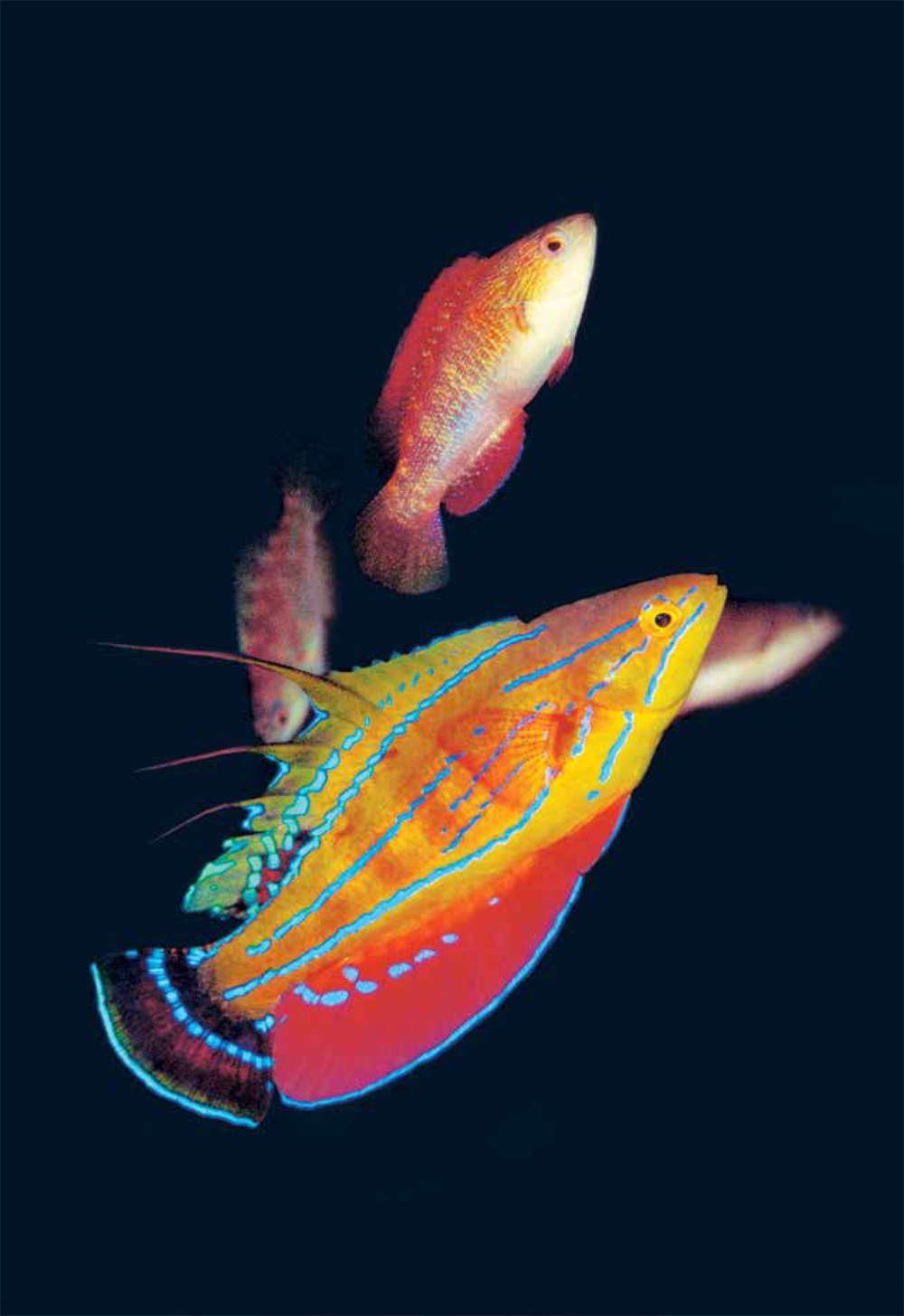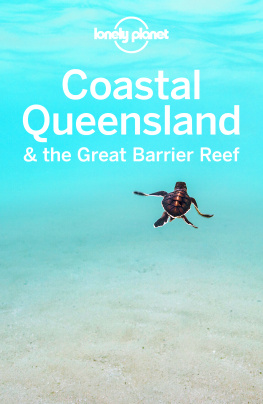A Field Guide to
Tropical
Reef Fishes
of the Indo-Pacific


DEDICATED TO THE MEMORY OF MY FATHER, REX ROBERT ALLEN
THE AUTHORS
DR GERALD R. ALLEN is the author of more than 400 scientific articles and 35 books. He served as senior curator of fishes at the Western Australian Museum between 1974 and 1997 and is an international authority on the classification of coral reef fishes as well as freshwater fishes of Australia and New Guinea. Since leaving the museum he has served as a private consultant, primarily involved with coral reef fish surveys in south-eastern Asia for Conservation International. He is also the recipient of several prestigious international awards for lifelong contributions to science including the Kay Radway Allen Award (Australia), Bleeker Award (Japan), Robert K. Johnson Award (USA), and NOGI Award (USA).
ROGER SWAINSTON is acclaimed as one of the worlds finest fish artists. His illustrations are more than accurate scientific records. Meticulous attention to detail, coupled with years of experience with marine life, infuse his paintings with a special vitality. His illustrations have appeared in numerous publications around the world.
JILL RUSE was born in Western Australia and is a graphic designer and illustrator with over 40 years of experience. She has done a variety of freelance jobs for the Western Australian Museum and other prominent institutions and companies. Jill does not dive, but has an excellent eye for colours and natural shapes. Most of her paintings in this volume were based on Dr Allens underwater photographs.
FOREWORD
The present volume is the fifth revised edition of the book that was originally published as The Marine Fishes of North-Western Australia in 1988. It was substantially expanded in 1997 and re-issued in 2000 under the title Marine Fishes of Southeast Asia with the inclusion of 36 additional plates by Jill Ruse. The 1997 and 2000 editions included additional coverage of northern Australia (including the Great Barrier Reef and offshore reefs of Western Australia such as Rowley Shoals), as well as the Indo-Malayan Archipelago, stretching from Malaysia and western Indonesia to the Solomon Islands and north to the Philippines.
Aside from the correction of several minor errors, the present volume is essentially similar to the third and fourth revised editions with one exception. It contains numerous nomenclatural changes, affecting both scientific Latin names and common names of the regions fishes. Only a few of these involve scientific names, but in all cases these have been made to reflect the current universally accepted nomenclature. Those familiar with previous editions will likely be shocked to see a wholesale change of common names. I offer sincere apologies for what might at first appear to be gross inconsistency. However, the common names used in this book are the result of a recent, major initiative taken by the Australian Government and Seafood Services Australia. For decades a situation existed where there were often several common names used for the same fish depending on geography or even growth stage. In an attempt to stabilise common nomenclature an initial workshop was convened in Adelaide in 2004 that was attended by representatives from the scientific community, seafood trade and the aquarium industry. After a circuitous two-year process an approved list of names was formulated and finally published in October 2006 (Standard Names of Australian Fishes, edited by G.K. Yearsley, P.R. Last and D.F. Hoese; CSIRO Marine and Atmospheric Research Paper 009). Hopefully, the new names will be gradually accepted by the public, thereby eliminating the considerable instability and confusion that has existed in the past.
Previous editions of this book have enjoyed remarkable success as an indispensable guide for anglers, divers and aquarists. I sincerely hope that a new generation of nature enthusiasts will embrace the current updated edition with the same enthusiasm.
Gerald R. Allen
Perth, Western Australia.
TABLE OF PLATES
INTRODUCTION
There are approximately 31,000 types of fishes inhabiting our planet, including at least 16,500 marine species. Tropical seas encompassing northern Australia and neighbouring countries immediately northward are inhabited by the richest fish fauna on the globe. Although official counts are lacking, an estimated 4,000 species occur in the region, including 2,775 coral reef fishes. For most families of tropical marine organisms there are more species present in this area than any place on earth. Intensive studies by the author over several decades have identified Indonesia as the richest country for reef fishes with 2,200 species. The Birds Head Peninsula region at the extreme western end of New Guinea (West Papua, a province of eastern Indonesia) is the epicentre of reef fish diversity, with nearly 1,500 species currently reported.
Why is this region populated by so many species? No doubt combinations of several factors are responsible. Certainly among the most important are a lengthy history of favourable climatic conditions (e.g. warm water), a diversity of habitat types and a tumultuous geological and hydrological past. In the latter category events such as sea level changes, ocean current shifts, volcanism and continental drift have created isolating barriers that greatly enhanced the speciation process.
One of the most significant factors responsible for the regions great plethora of fishes and other marine organisms is the vast tropical shoreline with an array of diverse habitats. Coral reefs are the most complex habitat system. They provide abundant living space and seemingly endless survival opportunities for a wealth of creatures. Spires of tabular and branching corals are the reefs equivalent of multi-storey tenements. Not only do they house thousands of living polyps, they also serve as a retreat for legions of brightly coloured fishes that swarm above. Ledges, caves and crevices form the inner sanctum of the reef city, which is populated by shy, seldom-seen fishes that may only emerge for night-time feeding patrols. The sand and rubble fringe surrounding individual reef complexes appears devoid of fish life. But first impressions are deceptive. Close inspection reveals an entire community of specially adapted species. Although this habitat contains far fewer fishes than nearby reefs, its inhabitants are equally interesting. Common adaptations include camouflage colouration and burrowing behaviour. Other major habitats in the region include inshore coastal environments vast stretches of sandy or rocky shores, interspersed with estuaries and coastal mangroves and open offshore oceanic habitats. Distinct fish communities populate all of these zones.

The Raja Ampats of West Papua, Indonesia is home to more fish species than any other similar sized area on earth (M. Erdmann).
This book contains more than 2,000 hand-painted illustrations featuring over 1,670 individual species. The paintings were completed over several years and are primarily based on photographs or colour transparencies of either live fishes taken underwater or freshly caught specimens. In many cases, preserved specimens at the Western Australian Museum have been consulted to ensure accuracy of detail and proportions. The end result is a colourful and highly comprehensive guide to the sea fishes of northern Australia and the adjacent South-East Asian region.
Next page











